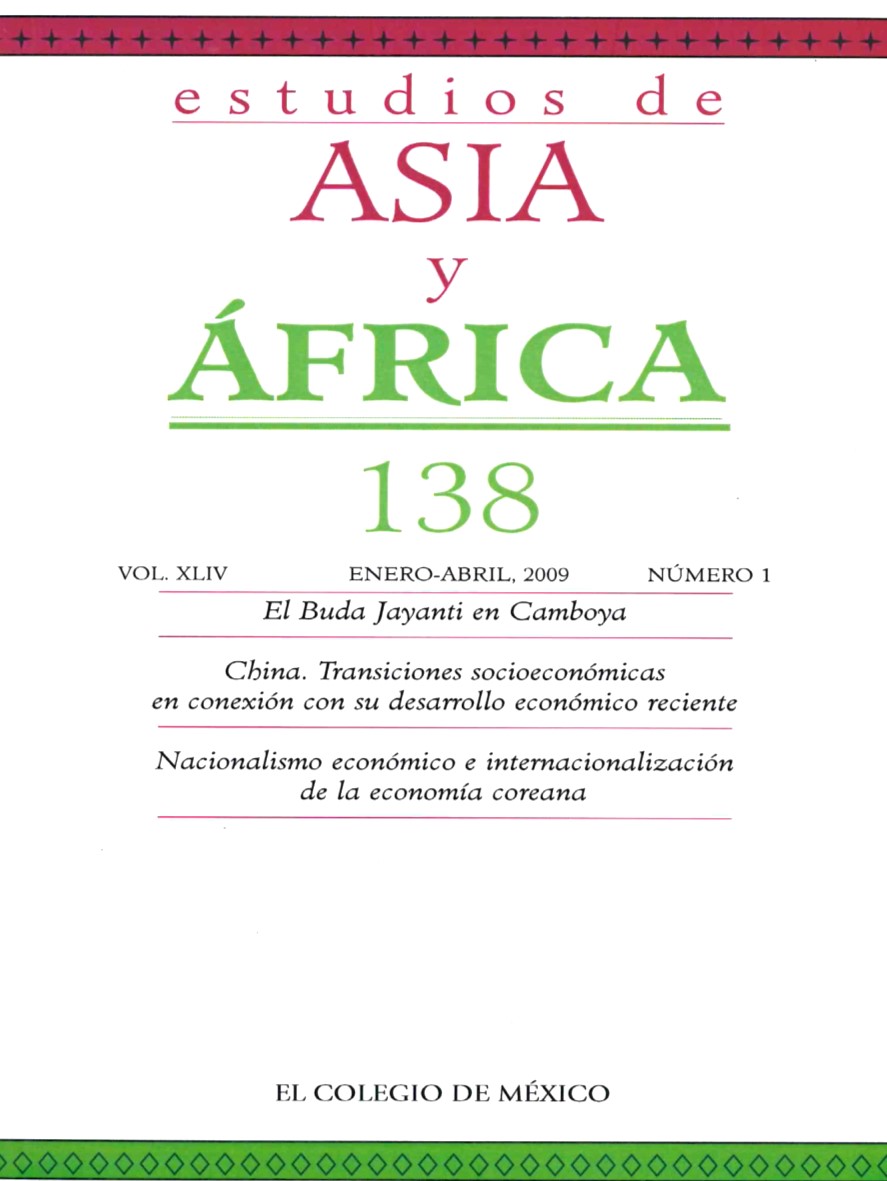Resumen
Este artículo explora el papel del ritual en la formación el estado y la identidad nacional en un momento crucial para la historia de Camboya. En 1957, en muchos países del Asia se celebró el Buda Jayanti, o el aniversario 2500 del logro del nirvana del Buda. Las interpretaciones milenarias de este evento coincidieron con el hecho de que muchos países budistas, entre ellos Camboya, habían logrado su independencia. Realizadas bajo la dirección del jefe de Estado, el príncipe Norodom Sihanouk, las festividades de este país tuvieron gran envergadura. Durante la semana del Wesak, se instaló una reliquia del Buda traída de Sri Lanka en una stupa recientemente construida. El artículo explora de qué manera este evento tuvo importantes implicaciones políticas y religiosas, y sirvió para cristalizar aspectos de la identidad camboyana en un momento significativo.
Referencias
Anderson, Benedict R. O’G. Language and Power. Ithaca, New York: Cornell University Press, 1990.
____________, Imagined Communities: Reflections on the Origin and Spread of Nationalism, Rev. Ed. London: Verso, 1993.
Bapat, P. V. 2500 Years of Buddhism. Delhi: Government of India, The Publications Division, 1956.
Becr Sál, Bīdhī Pracam Tápbī Khae. Phnom Penh: Institute Bouddhique, 1966.
Bowie, Katherine. Rituals of National Loyalty: An Anthropology of the State and the Village Scout. New York: Columbia University Press, 1997.
Chandler, David P. The Tragedy of Cambodian History: Politics, War, and Revolution Since 1945. New Haven and London: Yale University Press, 1991.
Chatterjee, Partha. Nationalist Thought and the Colonial World: A Derivative Discourse? London: Zed Books, 1986.
____________, The Nation and Its Fragments: Colonial and Postcolonial Histories. Princeton: Princeton University Press, 1993.
De Bernon, Olivier. “Le Buddh Damnay: Note sur un texte apocalyptique Khmer.” BEFEO 81: 83–135, 1994.
Edwards, Penny. “Making a Religion of the Nation and Its Language: The French Protectorate (1863–1954) and the Dhammakay.” In History, Buddhism, and New Religious Movements in Cambodia, edited by John Marston and Elizabeth Guthrie, 63–85. Honolulu: University of Hawaii Press, 2004.
____________, Cambodge: The Cultivation of a Nation 1860–1945. Honolulu: University of Hawaii Press, 2007.
Geertz, Clifford. Negara: The Theater State in Nineteenth Century Bali. Princeton: Princeton University Press, 1980.
Gombrich, Richard. Theravada Buddhism: A Social History from Ancient Benares to Modern Colombo. London and New York: Routledge, 1988.
Hansen, Anne. “Khmer Identity and Theravada Buddhism.” In History, Buddhism, and New Religious Movements in Cambodia. Honolulu: University of Hawaii Press, 2004.
Institute Bouddhique. L’An 2500 du Bouddhisme. Phnom Penh: Institute Bouddhique, 2001 (1957).
Obeyesekere, Gananath. “On Buddhist Identity in Sri Lanka.” In Ethnic Identity: Creation, Conflict, and Accommodation, 3rd ed., edited by Lola Romanucci-Ross and George DeVos, 222–247. Walnut Creek: AltaMira Press, 1995.
Osborne, Milton. Sihanouk: Prince of Light, Prince of Darkness. Honolulu: University of Hawaii Press, 1994.
Reynolds, Craig. Thai Radical Discourse: The Real Face of Thai Feudalism Today. Ithaca: Southeast Asia Program, 1987.
Ron Bumb, Rasmī Angar. Brah Paramasārīrikadhātu nin Brah Sakyamunīceyiy. Phnom Penh: Ron Bumb Rasmī Angar, 2002.
Ross, Helen Grant and Darryl Leon Collins. Building Cambodia: “New Cambodian Architecture” 1953–1970. Bangkok: The Key Publishing Company, 2006.
Sarkisyanz, E. Buddhist Background of the Burmese Revolution. The Hague: Martinus Nijhoff, 1965.
Smith, Frank. Interpretive Accounts of Khmer Rouge Years: Personal Experience in Cambodia Peasant World View. Occasional Paper No. 18. Madison: Center for Southeast Asian Studies, 1989.
Starkman, Nathan. Phnom Penh: Développement urbain et patrimoine. Paris: Ministère de la Culture, Département des Affaires Internationales; Atelier Parisien d’Urbanisme, 1997.
Tambiah, Stanley Jeyaraja. World Conqueror and World Renouncer: A Study of Buddhism and Polity in Thailand against a Historical Background. Cambridge: Cambridge University Press, 1976.
____________, Buddhism Betrayed? Religion, Politics, and Violence in Sri Lanka. Chicago and London: University of Chicago Press, 1992.
Terzani, Tiziano. A Fortune-Teller Told Me: Earthbound Travels in the Far East. London: HarperCollins, 1997.
Thompson, Ashley. “The Future of Cambodia’s Past: A Messianic Middle-Period Cambodian Royal Cult.” In History, Buddhism, and New Religious Movements, edited by John Marston and Elizabeth Guthrie, 13–39. Honolulu: University of Hawaii Press, 2004.
Thā Gān and Un Sū. “Pravatti Brah Sakyamunīcetiy.” Kambucasuriyā 56(4): 87–93, 2002.
Therborn, Göran. “After Dialectics: Radical Social Theory in a Post-Communist World.” New Left Review 43: 63–114, 2007.
Turner, Victor. The Ritual Process: Structure and Anti-Structure. Ithaca: Cornell University Press, 1969.
Wolters, O. W. History, Culture, and Region in Southeast Asian Perspective. Ithaca: Southeast Asia Publications, 1999.
Esta obra está bajo una licencia internacional Creative Commons Atribución-NoComercial-SinDerivadas 4.0.
Derechos de autor 2022 Estudios de Asia y África


